
Background information
Intel has released final specs for the Arc-A770 graphics card: so what?
by Kevin Hofer

Shortly before the Arc launch in Germany, Intel invited the press to what was probably the last chance to get answers to the most burning questions. After we informed you about the hardware of the Arc Alchemist graphics cards, now it's all about Intel's software and driver plans, including XeSS upscaling, Smooth Sync, Resizable BAR and DirectStorage.
This is an article from our content partner "PC Games Hardware". Here you can find the original article.
Arc is coming "very soon", Intel confirmed in a conversation with PC Games Hardware last Tuesday. We confronted the Intel representatives with the most burning questions around Arc and would like to share the answers in a series of articles. Today we focus on Intel's software and driver plans, including XeSS upscaling, Smooth Sync, Resizable BAR and DirectStorage. In addition, we summarise the previous information on the Arc models as well as their display capabilities once again. You can read all the details about the hardware here: PCGH inquires: Our Intel Arc A770 16GB and A750 information.
.
PCGH has already had many hours of hands-on experience using an Arc A380. Our focus in the first tests and articles was on compatibility and practicality of Intel's graphics driver including their control centre Arc Control. The highlight so far is the benchmark test of an Arc A380 with 35 games. But this is just the beginning, you can look forward to many more articles in the coming weeks, with of course the big models A750 and A770 in the spotlight.
In an interview with PC Games Hardware, Tom Petersen, Intel Fellow, and Ryan Shrout, Arc Graphics Marketing, had many more answers to our questions. You can find some of them here. If you are tired of reading, you can watch the complete interview in English on our Youtube channel PCGH Benchmarks & Analysis. The slightly truncated version with German subtitles can be found on the main PCGH channel tonight.
At the presumed launch around mid-September, there will be three Arc graphics cards in the A series (for "Alchemist"): the Arc A770, the Arc A750 and the Arc A380. The Intel Arc A770 Limited Edition will be offered exclusively with 16 gigabytes of memory, which Intel calls a "gift to gamers". Technically possible and approved by Intel are also 8 gigabyte versions on the part of the board partners. In the past, AMD and Nvidia often gave prospective buyers the choice between two memory configurations, but nowadays this is the exception. The surcharge for 16 instead of 8 gigabytes on the Arc A770 will be kept within narrow limits, which is an interesting added value for those who use their graphics card for more than a few months. How expensive the cards are in euros will only become clear at launch. Meanwhile, the Arc A750 will only be equipped with 8 gigabytes, both by Intel itself and by its partners, while the A380 will always have adequate 6 gigabytes installed. The power consumption of the A7 graphics cards is no more than 225 watts, so one eight-pin and six-pin power plug each from the power supply will suffice. Intel sees the A750 on par with Nvidia's Geforce RTX 3060 and the A770 halfway between RTX 3060 and RTX 3060 Ti. This amounts to performance in the range of the Radeon RX 6600 to RX 6650 XT, but with higher power consumption.
In addition to the "Limited Edition" reference boards, the Arc A770, A750 and A380 will also be available from various board partners. In this country, Asrock, Gigabyte and MSI are considered to be assured so far. The manufacturers are free to change various things within a defined framework. For example, there is the possibility of offering factory overclocking, either within the framework of the normal GPU power limit or in combination with an increased GPU power limit. Intel does not have a strict set of rules, but of course the firmware and fans, among other things, are approved before a design goes into production. When and in what form there will be custom designs Arc-A series, we will find out in the next few weeks.
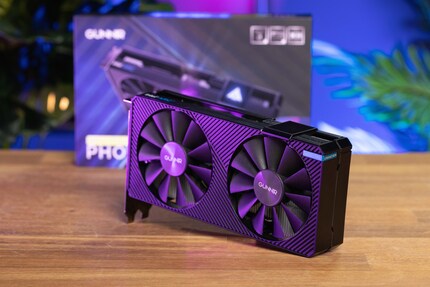
No Alchemist GPU supports HDMI 2.1 natively, only its successor Battlemage (Arc B-series) could change that at chip level. With the Arc A770 and A750, HDMI 2.1 support is nevertheless offered with the help of a trick: It is possible to convert one of the advanced display ports (incl. UHBR10 support) into an HDMI 2.1 output. This wiring trick is used by Intel's limited edition cards as standard. Board partners decide whether to implement it as well. Whether there are side effects compared to native HDMI 2.1 will be clarified by initial tests.
Nearly two years ago, AMD introduced the "Smart Access Memory" (SAM for short) feature with the Radeon RX-6000 series. This is an optional feature within the PCI Express specification, which AMD was the first manufacturer to implement profitably. Nvidia followed suit for the Ampere graphics cards (Geforce RTX 3000). Meanwhile, the PCI Express Panel (PCI SIG) calls the function "Resizable Base Address Register" and Intel seems to adopt this designation in a shortened form - as does Nvidia. Basically, any modern infrastructure is capable of applying ReBAR or rBAR in practice. But why is this important at all? The feature allows the main processor to access the graphics card's memory much more efficiently. If ReBAR is not available, accesses in 256-MiB chunks (heaps) are possible at best. This is very inefficient given modern memory capacities of between 6 and 24 gigabytes, so the new specification allows everything to be done in one request at the slot's full transfer rate if desired, rather than stringing together sequential mini-copies.
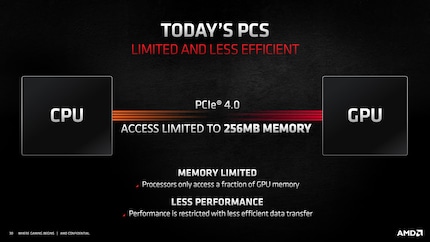
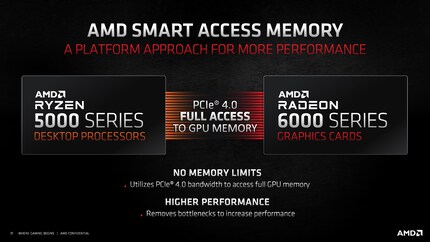
While it stands to reason that rBAR/SAM is helpful, the performance gains vary greatly depending on the PC or its architecture. An optional feature does not get the same attention as a mandatory one. While AMD trimmed both Ryzen and Radeon GPUs for this feature early on, Geforce chips don't benefit nearly as much. As Intel put on record in conversation with us, the graphics chip's memory controller has a big impact. The copy within the Arc Alchemist GPUs, he said, is very good at performing large copy operations (burst transactions), but relatively stolid when it comes to many small operations.
In other words, Arc graphics card hardware is designed for modern PCI Express communication between CPU and GPU and runs into problems when this doesn't happen. Owners of a Ryzen 3000 computer or Intel PC with Core i-10000 or newer are equipped to optimally control and utilise an Arc graphics card. If ReBAR support is missing, the performance of an Arc Alchemist drops by up to 40 per cent and is by no means competitive with a current AMD Radeon or Nvidia Geforce; Intel deals with this fact openly. Those who want to upgrade a really old PC should therefore keep their hands off the Arc A770, Arc A750 and Arc A380. In the conversation we also learned that this fact will definitely not change for Alchemist (1st Arc generation), but Intel is working on making the drops smaller by means of driver tweaks. Meanwhile, the 2nd and 3rd Arc generation (Battlemage and Celestial) could bring improvements to the memory controller.
AMD and Nvidia take different approaches when it comes to releasing new drivers. While the Radeon makers take a largely transparent approach, releasing at least one driver per month including unique naming, Geforce drivers are released less regularly and the version number says nothing about the age. As we learned in conversation, Intel tends to follow Nvidia's path with the "Game On" drivers. A fixed cadence is not being aimed for at the moment, rather the release is occasion-driven. New, important games, which PCGH always tests promptly, are, for example, a reason for a new driver. But releases in between are also possible, because there is a lot to do - Intel is fully aware of that. While we were talking to Shrout and Petersen in Berlin, for example, the first driver saw the light of day, which integrates the Arc Control software into the regular package. In the video (below this text) a fortnight ago, this was not yet the case; the progress of Intel's driver team is definitely visible.
Two functions to combat problems in games are already in the Intel driver: "Game Compatibility" and "Driver Boost". While the latter could unfortunately not be answered - here we are still waiting for connection feedback - there is an interesting switch behind Game Compatibility. The cause of many problems, according to Petersen, is that PC games are not necessarily programmed DirectX-compatible, i.e. they follow the Microsoft standard. Some titles are Geforce-compatible because Nvidia is the market leader with the largest installed base. The problem is that these hacks have to be addressed or circumvented - AMD, by the way, has the same problem.
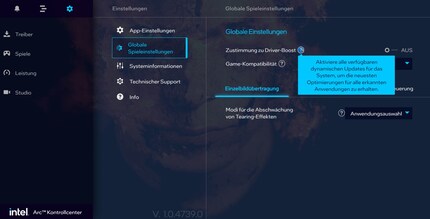
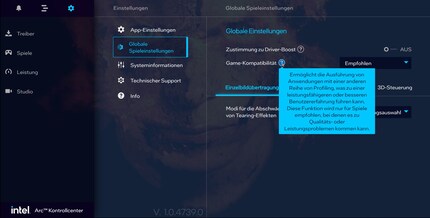
Game Compatibility, which defaults to "Recommended" in the driver, gives the user the option to turn on an alternative approach if problems occur. A game won't start or crashes? The options "Simple", "Advanced" or "Off" may help. The default setting "Recommended" only applies to games that Intel has already examined and profiled, and then ensures the best possible performance. If this approach fails, which is literally programmed especially with older and indie software, the switch can help with progress, but there is no guarantee of success.
The Intel driver offers an interesting unique feature called Smooth Sync. This is one of the many ways of handling frame cracks that occur in conventional monitors with a rigid refresh rate without synchronisation. Smooth Sync is able to make the cracks much less disturbing by using dithering to soften the abrupt transition between two frames. A few weeks ago, the feature was still a little shaky on its feet and could lead to image errors, but in the meantime the driver team has sorted out the teething problems; Smooth Sync can already be admired on Arc-A380 graphics cards. True to the motto "Nothing in life is free", Smooth Sync causes minimal latency. According to Tom Petersen from Intel, this is at best measurable, but in no case tangible - PCGH tests will soon look into the details using the Arc-A7 cards.
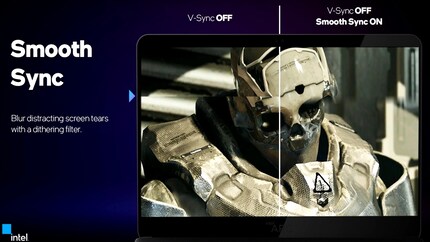
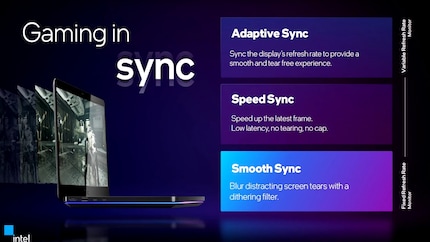
Unlike AMD and Nvidia, which have already announced support for the Windows and DirectX feature DirectStorage, Intel has no details up its sleeve at this stage. According to Tom Petersen, the function is considered "very important" and is therefore working together with Microsoft on a solution or implementation for the Arc graphics cards. The necessary encoding skills on the GPU side are available, everything else is a software matter. The first game to use the streaming possibilities of DirectStorage for an elaborate open world will be Forspoken, according to the current status. The other features of DirectX 12 Ultimate, namely Variable Rate Shading, Sampler Feedback, Mesh Shading and DXR 1.1 are already implemented in the driver and can be tested, for example, with 3DMark (currently only with an Arc A380).

Intel stressed during our conversation that the launch of the A7 graphics cards also depended on XeSS, the DLSS-like AI upsampling being a key pillar of the Arc foundation. XeSS has been implemented by Intel, along with various game developers, in current and upcoming titles for months. Updates for over 20 games are currently in development, all of which are expected to be made available during the launch period of the Arc graphics cards. According to Petersen, XeSS does not show as much smearing as DLSS, which is a clear plus point from PCGH's point of view. However, it is still completely open how the other (reconstruction) properties are, although Intel is confident that gamers will like the result. Another plus point is that XeSS works on all graphics cards, so everyone can get a taste of it. For Radeon users, this makes XeSS the first AI-assisted upsampling method.
XeSS will be available in the form of four modes in the games: Ultra Quality, Quality, Balanced and Performance - Intel is forgoing an "Ultra Performance" mode à la DLSS and FSR 2.0 in favour of a particularly high-quality mode. Our enquiry regarding the upscaling factors or internal resolutions could not be answered comprehensively, but one can at least compare XeSS Performance with DLSS Performance and FSR 2.0 Performance, because all three work internally with a quarter of the target resolution (1/2 per axis). This means that performance increases by more than a factor of 2 are possible. Chances are good that the respective quality modes are also comparable.
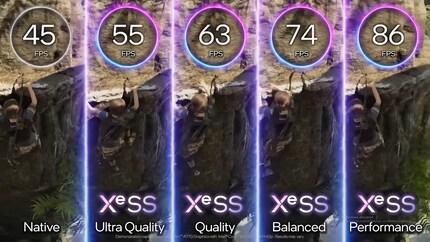
Already a year ago, Intel provided a glimpse under the bonnet of the Xe architecture that revealed relative ray tracing power. An Nvidia-like design with powerful ray tracing units is responsible for this. The ACM-G10 chip houses 32 so-called ray tracing units (RTUs), which can complete all important tasks with high performance. As Intel explains in a new article, the Arc GPUs also contain a dedicated "BVH cache", i.e. a repository for the most important data for ray tracing. It is currently unknown whether this simply refers to the lush Level 2 cache of the Alchemist GPUs or an additional memory. Relatively speaking, Arc is thus strongly positioned, with more level 2 cache than Nvidia. In contrast, Radeon chips of the RDNA 2 generation rely on a spacious level 3 cache, which does not work at full chip speed, but according to AMD also amounts to better ray tracing performance. However, RDNA 2 cannot accelerate the BVH structure, while Alchemist apparently can (like Turing and Ampere).
The bottom line is that Intel sees the Arc A770's ray tracing performance quite clearly ahead of the Geforce RTX 3060, with the latter scoring just below the Radeon RX 6700 XT in PCGH's Raytracing 2022 performance index. The likelihood that the Arc A770 is mostly between the Geforce RTX 3060 and Radeon RX 6800 in ray tracing and thus leaves a better impression than in rasterising is high, because two things that lie Arc obviously come together here: DirectX 12 and ray tracing (which is not usually run outside of DX12 and Vulkan). We will of course review the Alchemist's RT performance in detail as soon as that is possible.
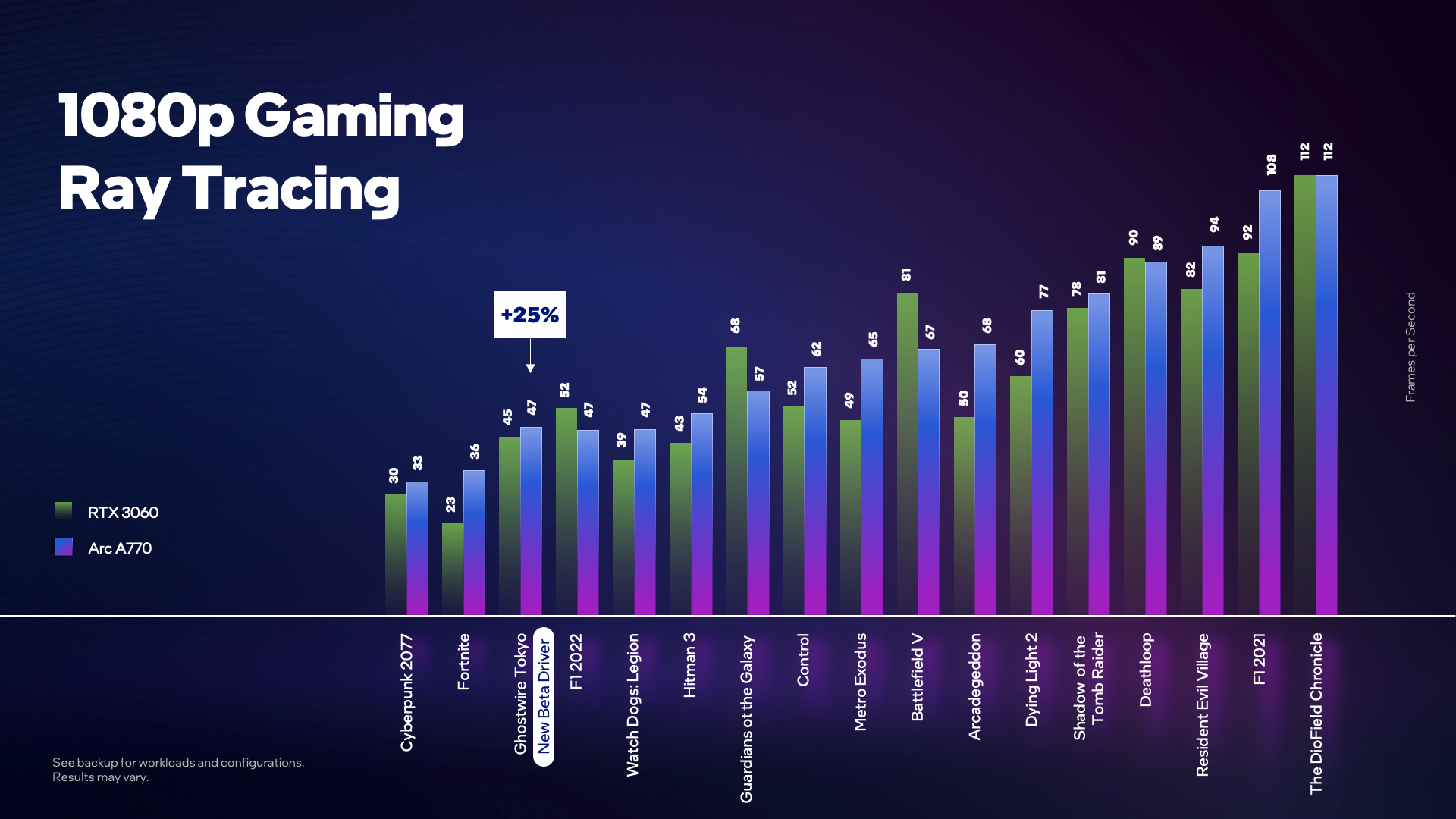
When the Arc A770 and Arc A750 will be released remains an open question. "Soon" or now "very soon" seems like a running gag given the original expectation earlier this year. However, the finish line is in sight, Intel representatives confirmed in an interview with PC Games Hardware. Give Arc two more weeks and it could be that time. When it happens, we will of course be there live for you.
PC Games Hardware reports daily from the world of PC hardware and PC games or informs with tests and practical articles about graphics cards, processors, mainboards, general technology topics and PC games.
Interesting facts about products, behind-the-scenes looks at manufacturers and deep-dives on interesting people.
Show all
Background information
by Kevin Hofer

Background information
by PC Games Hardware

Background information
by Martin Jud